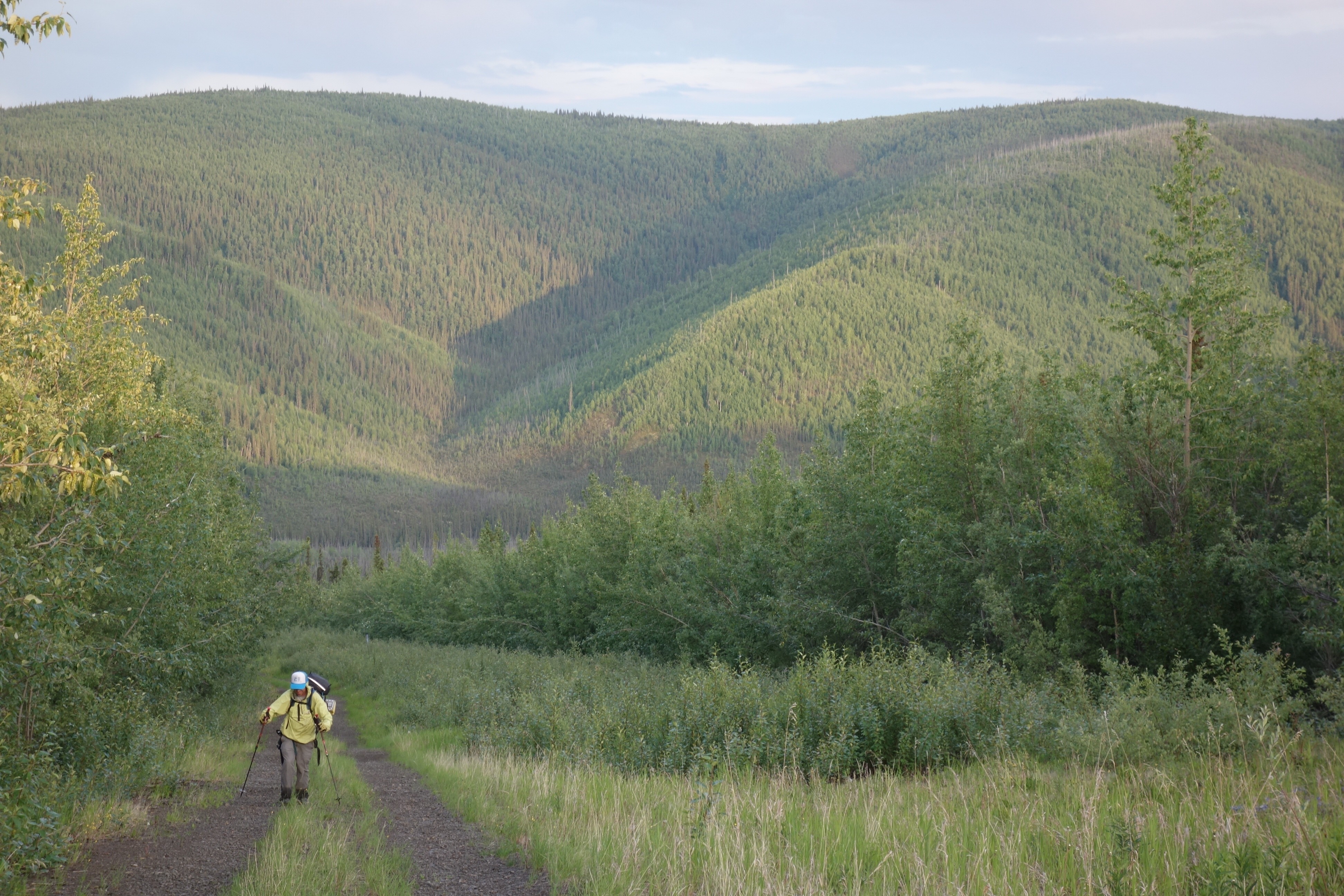On a long hike in the Arctic, you learn to savor each bug-free moment

JIM RIVER — On this cobble bar north of the Arctic Circle, it is a fine day. The sky is a sheet of blue, a breeze wraps us with clean air, a sandpiper mom shrieks over her hatchlings. They are gray-blue puffballs, extra cute and almost invisible amid the stones.
In short, this is a perfect morning for the human creature, with its narrow range of comfort regarding temperature and insects. Along my hike on the path of the trans-Alaska pipeline this summer, these moments are the exception. But they always seem to happen, at least once a day.
This Jim River campsite is perfect for its two acres of bare rock next to a clear mountain stream. Its distance from the greenery offers respite from the female mosquito and her search for blood protein.
[Bloodsucking, bloodthirsty, blood-crazed predators]
Sometimes, there is no break. On a recent morning, I was camped in lowlands near Prospect Creek. That is the spot where America’s all-time low temperature of minus 80 F was recorded on Jan. 23, 1971. The recent July day when my friend John Arntz and I waded the creek, the air was 160 degrees warmer.
After John caught a ride back to town near Prospect Creek, I looked for a place to camp. I settled on a patch of crunchy lichen in a black spruce forest near the pipe. There were few mosquitoes active, probably because of the warm temperature.
The next morning was a different story. The bloodsuckers perched on the tent screen, waiting for my dog Cora and me to emerge. We rewarded them by pulling up the tent stakes in the coolness of 7 a.m. I ate breakfast standing up.
An insect biologist once said that extreme cold and biting flies maintain the circumpolar north’s low human population. I agree. Even after spending 70 nights outside this summer, my tolerance goes back to zero when I enter a dark patch of vegetation and feel the pinpricks.
And although the pipeline pad — the road that follows the pipe for almost its entire 800 miles — is wide and graveled, the route dips into many swampy valleys. Those wetlands are full of mosquitoes, and when it is hot, moose flies with their saber mouth parts.
Sometimes, on this slow traverse of Alaska, there is nothing you can do to avoid biting insects. A few weeks ago, my friend Andy Sterns and I descended into Isom Creek as the day cooled. There, the pipeline gravel road disappears, as it sometimes does at what Alyeska Pipeline Service Co. calls a block point, and turns into a winter trail. There, you walk on wet, spongy plants and wait for stabbing sensations.
Isom Creek was the “deep, deathlike valley” described by Robert Service. Full of muskeg, leafy willows and crooked spruce, it had the turpentine scent of Labrador tea. The creek bottom was sluggish and meandering. The dense, claustrophobic brush promised a large mammal encounter.
We crossed serpentine, muddy Isom Creek three times, adding our sneaker tracks to the bear and moose prints and gaining an ever-larger entourage. I pulled on a bug jacket in order to dip a few jugs of Isom Creek to carry away to higher ground. The headnet blackened with tiny bodies.
I tried not to look at Cora, who hosted a party on the bridge of her nose. After taking off my bug jacket because it was too hot for hiking, I squirted repellent on the backs of my hands, which held the water jugs. We headed uphill.

Engineers did not design the pipeline’s route for walking. In some places — and for much of the way from Fairbanks to the Yukon River — the path is steep as a double black diamond ski slope. You lean into the hills, Achilles’ tendons stretched like cables, heels hovering. So it was into and out of Isom Creek. There, as it neared midnight, we crept up the hill at 1 mile per hour. The mosquitoes applauded.
We reached a hilltop gravel pit and pitched tents, too late to beat the cool air favored by bugs. A great horned owl perched on a spruce snag and watched us swat through dinner. Finally, we found the sanctuary of the tents.
In a few hours, the sun again popped over the hills. The temperature rose to the debugging point, perhaps 70 degrees. We crawled from the overheated shelters to a different, bugless world.

Ned Rozell is a science writer for the Geophysical Institute. This summer, he is hiking the path of the trans-Alaska pipeline from Valdez to Prudhoe Bay. He also did the trip 20 years ago. Follow along here.